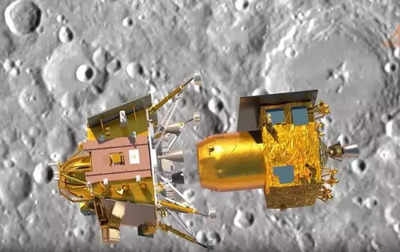Table of Contents
Fueling the Triumph of Chandrayaan 3

The triumph of Chandrayaan 3, poised for launch after the setbacks of Chandrayaan 2 in 2019, owes its success to Nilesh M Desai’s diligent efforts and strategic approach. Nilesh M Desai, the driving force behind the Chandrayaan-3 project and the Director of the Space Application Center (SAC), shared exclusive insights into the project’s evolution during a discussion with Chandrani Banerjee from The Statesman. This conversation unveiled Desai’s unwavering commitment and his team’s resilience in conquering challenges, including the daunting hurdles presented by the COVID-19 pandemic.
Excerpts from the interview shed light on various aspects:
Q: Could you share the preparation that led up to this point?
A: The journey to this day has been extensive. Our involvement in Chandrayaan-2 spanned a decade, during which the entire team at the Space Application Center (SAC) and the Indian Space and Research Organisation (ISRO) played a pivotal role. Upon the setbacks of Chandrayaan-2, we immediately initiated preparations for Chandrayaan-3. The effort invested in reaching this juncture has been considerable, involving multiple milestones and challenges that we have successfully surmounted.
Q: What was the team size for Chandrayaan-3?

A: As previously mentioned, teamwork has been paramount, requiring the combined efforts of approximately 17,000 individuals affiliated with SAC and ISRO. Every contributor, no matter how seemingly small their role, has played a part in this collaborative endeavor. The creation of a project of this magnitude necessitates meticulous attention across numerous facets, making every individual within our extended team an indispensable asset.
Q: Can you identify the key members of the core Chandrayaan-3 team?
A: The project’s execution demanded distinct teams for hardware, software, algorithms, continual assessments, and measurements. These various components coalesced to form a cohesive unit, where every participant’s contribution held significance. This collective effort was the driving force behind our progress, with several unsung heroes working behind the scenes. Hence, I consider each individual associated with ISRO as an integral part of the core team.
Q: Did the failure of the Chandrayaan-2 landing contribute to the success of Chandrayaan-3?
A: Certainly. The setback in 2019 provided invaluable insights. While Chandrayaan-2’s orbiter achieved success, the landing was not realized. The lessons learned from this experience profoundly influenced our Chandrayaan-3 preparations. The failures served as a rich source of learning, strengthening our resolve. Despite the decade of hard work and the disappointments, the experience fortified us and facilitated enhanced planning. Chandrayaan-3’s development, initiated in 2019, has impressively culminated in its current state in 2023, an achievement hastened in comparison to Chandrayaan-2.
Read this also : Luna-25 Probe’s Moon Mission Ends in Unfortunate Crash: Roscosmos Report
Q: How many years did the Chandrayaan-3 team dedicate to the mission?
A: The Chandrayaan-3 project spanned four years, a duration that included the disruptive impact of the COVID-19 pandemic. The pandemic posed challenges due to health risks, the loss of lives, and the constraints imposed by lockdown measures. Despite these obstacles, our commitment to Chandrayaan-3 remained unwavering. With determination, we persevered through these hardships, prioritizing the project’s advancement above all else.
Q: What were some of the significant challenges faced during the Chandrayaan-3 research program?
A: The pandemic, undoubtedly, was a formidable setback. While it introduced concerns regarding safety and the potential spread of the virus, our determination to succeed remained resolute. Consequently, we adapted our operations with necessary precautions to continue the research. Navigating the pandemic’s uncertainties, along with restrictions on physical interactions, proved demanding. Throughout the four-year timeline, there were instances of lows, yet we successfully concluded the project despite these obstacles.
Q: Could you provide information about the timing of the soft landing tomorrow?
A: The scheduled trajectory involves departure towards the moon at 5.47 pm (IST), with an anticipated landing time of 6.04 pm (IST) following a 17-minute journey. The progress thus far instills confidence, as the execution aligns with the meticulously devised plan. Based on this alignment, we hold the belief that all elements will harmonize effectively.
Q: Has a contingency plan been established in the event of a landing rescheduling?
A: The need for a contingency plan is deemed unnecessary, as the landing process is anticipated to proceed as planned. The preparation and measures in place are expected to ensure the mission’s successful execution, leaving no requirement for an alternative strategy.


